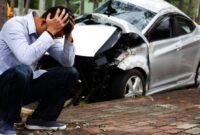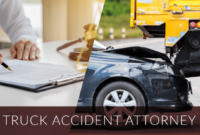Car accidents can be stressful and confusing, especially when it comes to determining who’s responsible for the damages. This guide provides a comprehensive overview of car accident liability, empowering you with the knowledge to navigate the legal process effectively.
The Legal Framework of Car Accident Liability
The legal framework governing car accident liability varies by jurisdiction, but some general principles apply widely. Central to most cases is the concept of negligence, which refers to the failure to exercise reasonable care to avoid causing harm to others. In the context of car accidents, negligence can include actions like driving under the influence (DUI), speeding, or failing to yield the right of way.
Determining Fault
Determining fault in a car accident involves a meticulous examination of various factors:
- Witness Statements: Firsthand accounts from witnesses can shed light on the events leading up to and during the accident, providing valuable perspectives to corroborate or contradict driver claims.
- Police Reports: Detailed reports compiled by responding officers document the accident scene, including witness statements, physical evidence, and driver narratives. These reports serve as official records and can be crucial for supporting or refuting fault claims.
- Expert Testimony: Complex cases may necessitate expert witnesses who provide specialized knowledge and analysis. Accident reconstruction specialists, for instance, can help the court understand the technical aspects of the collision and its aftermath through evidence like vehicle damage analysis.
Shared Liability
In some scenarios, multiple parties may share responsibility for an accident. For example, if one driver runs a red light and collides with another vehicle, both parties might be found partially at fault. The court will apportion liability based on the degree of each driver’s negligence, assigning a percentage of fault to each.
Types of Liability in Car Accidents
Understanding the different types of liability that can arise in a car accident is essential:
- Compensatory Damages: These aim to compensate the victim for actual losses incurred due to the accident, such as medical expenses, property damage, lost wages, and pain and suffering.
- Punitive Damages: Awarded in addition to compensatory damages in cases of egregious or malicious conduct by the defendant, punitive damages aim to punish the defendant and deter similar behavior in the future.
- Non-Economic Damages: These compensate the victim for intangible consequences of the accident that are difficult to quantify in monetary terms, such as loss of enjoyment of life, loss of consortium (companionship, support, and intimacy with a loved one), and emotional distress.
Insurance and Liability
Car insurance plays a critical role in car accident liability. Liability insurance, a core component of auto insurance policies, protects drivers from financial responsibility for damages caused to others in an accident where they are deemed liable. With liability insurance, the insurance company steps in to cover expenses like medical bills, property damage, and legal fees associated with the accident.
- Filing an Insurance Claim: To obtain compensation through insurance, you must file a claim with your insurance company. This typically involves promptly reporting the accident, providing detailed information about the accident, submitting supporting documentation, and cooperating with the insurance adjuster’s investigation.
Legal Remedies for Car Accident Victims
Victims have various legal options to seek compensation for their injuries and damages:
- Filing a Lawsuit: This involves initiating a civil action against the at-fault party in court. The lawsuit outlines the plaintiff’s (victim’s) claims for damages. The process involves filing a complaint, serving it to the defendant, engaging in discovery (exchanging information), and potentially going to trial if a settlement cannot be reached.
- Mediation: An alternative dispute resolution process where a neutral third party (mediator) facilitates negotiation between the victim and the at-fault party. Mediation can be a faster and less adversarial way to resolve disputes.
- Settlement: Victims can agree to accept a specific amount of compensation from the at-fault party in exchange for dropping their claims. Settlements can be negotiated directly or with the assistance of attorneys or insurance companies.
Conclusion
Car accident liability is a complex legal landscape. By understanding the principles outlined in this guide, you can make informed decisions and protect your rights following a car accident. If you’ve been in a car accident, consulting with an experienced personal injury attorney is crucial to navigate the legal process and ensure you receive fair compensation for your damages.




